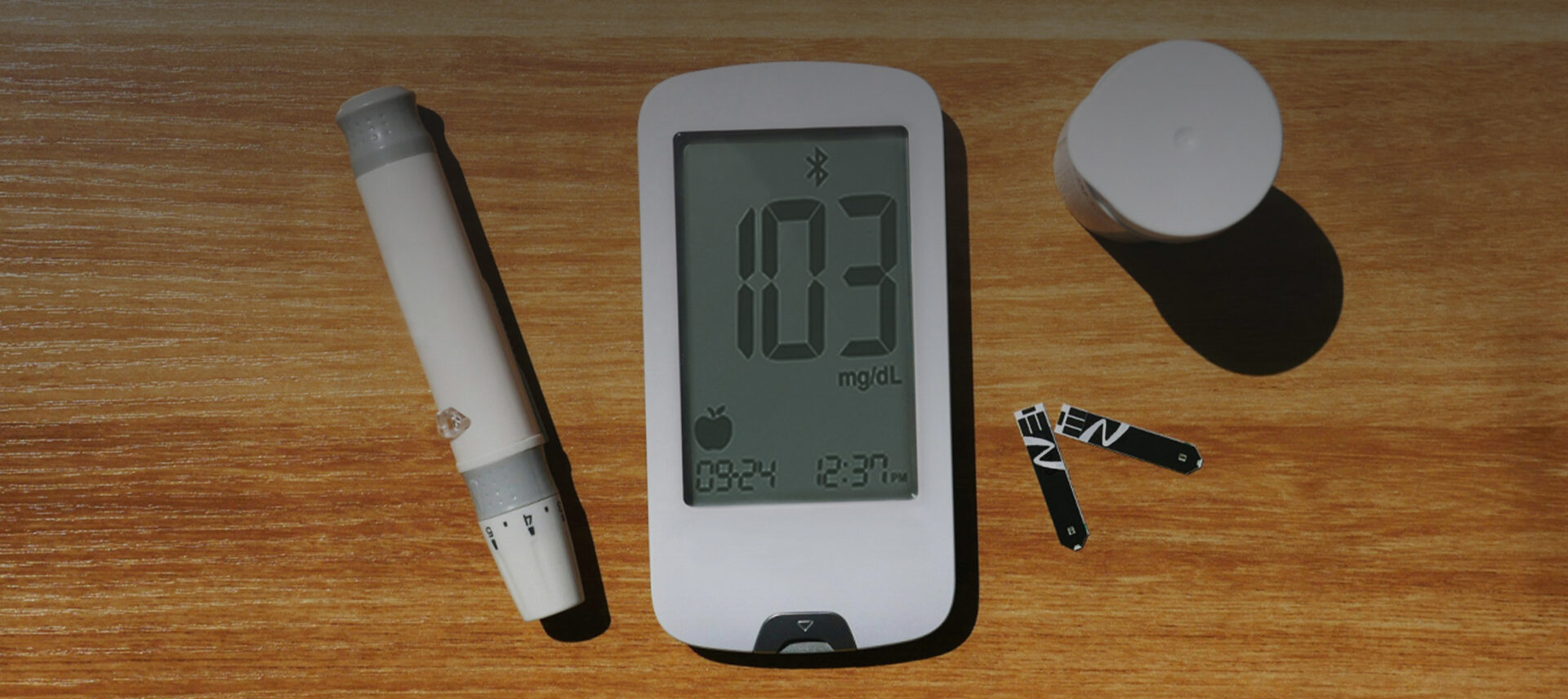
Article
3 Ways to Differentiate Your At-Home Medical Device in a Competitive MedTech Market
The demand for superior at-home medical devices has never been higher. Learn how your MedTech company can exceed user expectations and gain an advantage.
At-home medical devices are disrupting the MedTech industry. Over the last several decades, patients have become increasingly responsible for managing and paying for their own care. This, combined with the pandemic, has accelerated the demand for better self-administration options. That means whether you’re a design leader at a start-up or at an established medical device manufacturer, you have a tremendous opportunity to innovate and capture new market share.
Of course, entering the at-home medical device market is not without obstacles. FDA regulatory standards are continually evolving. Some insurance plans refuse to cover the cost of newly launched devices, and since home health equipment functions like consumer products, the risk of commoditization is high.
Still, fast-moving industry disruptors have already begun to make their mark, releasing new products like DIY diagnostic tests and wearable continuous glucose monitors. So how do you avoid releasing a copycat product that fails to make a true market impact? How do you create a product people will be willing to pay for even if their insurance company won’t?
The answer lies where it always does in product development. Invest in a superior design that delivers an exceptional user experience.
Here are three ways to do it.
1. Look at MedTech Regulatory Requirements as a Starting Point, Not the End Goal
You can’t launch a successful MedTech product unless you first check off all the appropriate regulatory and compliance boxes. Before you engage a design firm to bring your highly regulated product to life, it can be helpful to understand the constraints you’re up against.
Safety and compliance alone do not lead to widespread market adoption, and it’s quite common for MedTech developers to become so focused on the regulatory piece that they fail to design a product users actually want.
When it comes to creating a positive user experience for MedTech products, the bar is shockingly low. That’s very good news for you. You’d be surprised how much you can set your product apart simply by giving users a little more than they expect. If you go so far as to surprise and delight them? You just might corner your market.
2. Consider the Unique Needs of At-Home Medical Device Users
So how do you create an at-home device that achieves widespread market adoption? It begins with engaging in a robust strategy phase that delves deep into user research.
Designing a product for consumers is much different than designing one for clinicians. Doctors, nurses, and other healthcare workers are trained professionals. They’re accustomed to using complex equipment and understand the importance of adhering to prescribed step-by-step processes. They don’t get freaked out by alarms and alerts, and they generally know how to avoid common hazards like needle pricks or chemical exposures.
The average user of an at-home device doesn’t come to the table with the same background and capabilities. That makes conducting user research a non-negotiable part of launching a successful product.
Know Who Your Users Are
Novice MedTech developers often make the mistake of designing a device for primary users without considering all the other people who will use and interact with the product. It’s vitally important to identify all your users and get to the heart of their active and latent needs.
For example, an adult patient with Type 1 diabetes may have different needs for self-administration and self-care than a parent or family member of a child with the same condition. Home healthcare workers bring an entirely different set of needs to the table.
Likewise, a person with a chronic condition might have higher expectations of a medical device and a lower tolerance for usability shortcomings than someone dealing with a temporary issue.
Do Your User Research
Getting to know your users requires you to:
- Talk to users directly. Ask them about their pain points, frustrations, and limitations. Invite them to think about what they wish the product could be like.
- Watch how they use the device. Look for shortcuts they take or creative workarounds they’ve implemented.
- Map out the entire user experience. You need to know how your device will fit into the patient’s overall care plan.
- Consider various users’ psychology and state of mind to avoid making errant assumptions about your product’s design. For example, at-home pregnancy tests that produce a smiley face to indicate a positive result assume everyone will be happy with the news that they’re pregnant. That smiley face may not be representative of a user who could be feeling any number of emotions from a positive test result.
Finally, think about all the other ways users will interact with the product. Is the packaging easy to open? Are instructions clear and easy to understand? Will the device need to be sterilized in between uses? Are there specific ways to dispose of it properly? Considering your product’s entire lifecycle at the outset is a key part of meeting users’ needs.
Factor in the Users’ Environment
In a clinical setting, the environment in which a product is used is largely predictable, controlled, and sterile. In an at-home setting, the opposite is true.
You can’t even assume your device will always be used within the confines of a home environment. People run errands, go to work, attend their kids’ activities, and take trips. Will they be able to use your device when they’re on the go?
To set your product apart, consider all the environments in which your product will be used and work with them. In particular, look for ways your product can enhance the user experience.
Think about a CPAP machine. In a sleep study setting, it might not matter if the device is clunky and large. The length of the power cord might not be a consideration, and no one expects the device to be aesthetically pleasing. After all, the user only interacts with the device for the duration of the study rather than on a nightly basis.
But in an at-home setting, the design matters a lot. Creating a device with a small, compact footprint leaves space for a lamp and a stack of books on the nightstand. A pleasing design might allow the device to blend in rather than stick out like a sore thumb. An extendable power cord gives users flexibility to plug in the device even if there’s not an outlet beside their bed, or a back-up battery pack might give the user freedom to participate in activities like camping.
Finding ways to meet users’ needs no matter where they happen to be will go a long way in differentiating your product from competitors who design for limited use cases.
3. Study Other Consumer Products for MedTech Design Inspiration
Many consumer product designs already solve the very kinds of problems you need your MedTech product to solve. And patent-protected IP aside, there’s no harm in analyzing what consumer products do well and applying what you learn to your at-home medical device. Doing so is an excellent way to find ideas for product differentiation.
For example, FitBits and Apple Watches are both instructive case studies in wearability, intuitive digital UX, and consumer engagement. Like a medical device, they give users glimpses into their health data and provide real-time insights into the impact of certain behaviors. Unlike most MedTech products, they make taking ownership of one’s health fun. That makes them an excellent model for designing products like glucose and vital monitors in a way that’s functional and enjoyable to use.
The Elements of Consumer Product Design that Translate to MedTech
As you examine consumer products for design inspiration, look for:
- Design features that will feel familiar to the user. This will, in turn, help you establish trust and confidence in your device.
- Ways to tap into users’ existing mental models. This makes the user experience as intuitive and seamless as possible.
- Opportunities to integrate your device with other systems that are already part of your users’ daily lives (like an app for a smartphone). This increases the chances of making your device part of your users’ daily rhythm, too.
- Methods of reinforcing positive behaviors (like gamification badges). This increases adoption and use, which plays a vital role in improving patient outcomes.
That last point is particularly important. In a clinical setting, doctors have control over using equipment and delivering treatment. In an at-home setting, that responsibility rests solely with the patient or caregiver. If the user experience is unpleasant, frustrating, confusing, or untrustworthy, people simply won’t use the product, and their outcomes will suffer as a result.
Keep Users Needs at the Heart of At-Home Medical Device Design
In many ways, designing a successful MedTech product is no different from developing any other kind of product. Yes, you have more regulatory hoops to jump through, but at the end of the day, you still need to make a good product that meets users’ needs and delivers a positive experience.
That’s where M3 comes in. We have decades of experience going beyond minimum regulatory requirements to design products users truly love. We can help you, too — so let’s talk.





